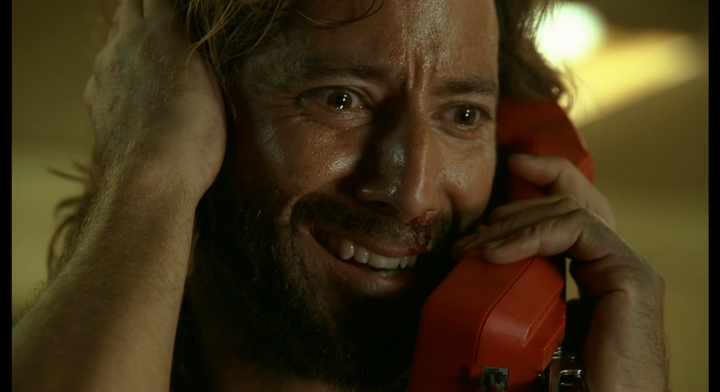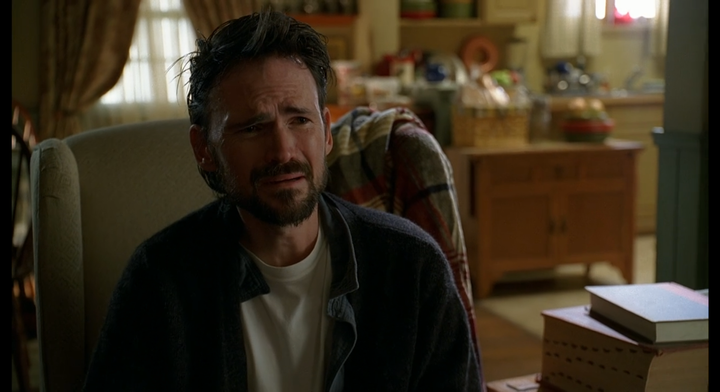Sabotage: Part 4 - Foundational Lies
The process of repair is being sabotaged. The first step of the process of repair is awareness. The first sabotage is ignorance.

Note: this essay was originally published on Revue on August 22, 2022.
Intro | Part 1 | Part 2 | Part 3 | Part 4 |
Part 5 | Part 6 | Part 7 | Part 8 | Part 9 |
Part 10 | Part 11 | Part 12 | Part 13 | Part 14 |
In 2016, the extremist right wing television propagandist Laura Ingraham stood at the podium of the Republican National Convention, electrifying the crowd for approximately 15 minutes. Her speech was about how it was time for people who already had disproportionate power to take power back. It was about re-establishing an expectation of respect from others on behalf of those who had demonstrated very little respect for others. It was a screed against bias in the media delivered by a major media news figure giving a prime-time speech for a party candidate. It was about some other things, also, but mostly it was about what speeches at conventions are always about—which is getting people excited about electing the party’s candidate as president.
That candidate, in case you’d forgotten, was Donald Trump, who was in the midst of running an openly authoritarian, openly white supremacist campaign—by which I mean that the things he was proposing were authoritarian things, the ways he was proposing achieving them were identical to methods recommended by openly white supremacist groups of 2016, and he was even using the same words as these groups, the exact same phrases and keywords and memes.
This sort of thing proved very popular with the Republican Party, and Donald Trump overwhelmingly received the nomination for president.
Ingraham, who very much wanted this man to be president, finished her speech with the standard signoff of any political figure of modern times, which is “God bless you, and God bless the United States of America.”
Then she turned to her left, profile to the cameras, and raised her stiffened right arm at the shoulder, teaching us incontrovertibly that the Ingraham Angle is 45°.
It’s an unmistakable gesture.
It’s certainly possible for somebody waving to a crowd to be caught on camera in a particular instant, the unnatural preservation of the moment creating an illusion of that gesture, but on film, as a gesture—stiff arm from the shoulder palm flat down—it’s hard to miss. I guess what I’m saying is, people waving do occasionally achieve that position for a split-second, but they do not make that gesture. I don’t know if I’ve ever seen anyone make that gesture by accident.
Let’s go to video, to see what the big screens in the convention hall would have showed, the image that Laura Ingraham, who spends her career in front of cameras, would have known she was creating.

She even transitions to a wave, so you can see what a wave looks like.
Again, it’s an unmistakable gesture, one we’d seen before, and perhaps most frequently at political conventions in support of supremacist authoritarians.
We’ve seen it since then, too. For example, it’s the gesture open Nazis made in the days after Donald Trump’s election, from the crowd at the Ronald Reagan building in Washington DC, not far from the upcoming site of Donald Trump’s inauguration, where a white supremacist group called the National Policy Institute held their annual convention. Their after-dinner speaker, Richard Spencer, closed with “heil Trump,” and though he said it with enough sauce that most media quoted him it as “hail Trump,” his audience understood him perfectly well, and made the old familiar Ingraham Angle. Like I said, it’s an unmistakable gesture—especially hard to mistake in a room full of Nazis. Unless you think they, too, were all waving. Who knows? Maybe they were. It’s impossible to really know motives.
In the years since, I’ve frequently mentioned the Ingraham incident, as I think it is informative of this moment in time—a gesture somehow simultaneously sly but blatant, which might have been a statement of purpose, or might have been a mean-spirited trolling from a mean-spirited professional troll, or might have been a signal to the open white supremacists (who, as we’ve learned, comprise the foundation of the Republican Party’s base) that their moment was at hand, or I suppose might have been a simple mistake, an arm-oopsie—though I have to say that a political convention supporting an authoritarian white supremacist demagogue is a strange place for such a media-savvy and camera-ready person to make such a mistake, and Republicans do seem to keep making “mistakes” in which they seem to be associated with white supremacist leaders and signs and signals and slogans and policies and methods, over and over and over again.
Anyway, the underlying motivation isn’t what interests me, and isn’t knowable anyway, unless Ingraham ever decides to disclose it, which seems unlikely. What interests me is the fact of the gesture, which exists, and people’s response to the gesture, which is to deliberately not know that it exists. A lot of people really don’t want to know that it was what it is, and they have plenty of help.
A day after the incident, an article was written on Slate explaining that the gesture Ingraham made wasn’t the gesture it is, because … well, because it isn’t. I’m not going to link to it, but you can find it without much effort; it’s pretty much the only writing from a major media establishment you’ll get if you search online for the incident, and if you bring the incident up, it’s the thing that people who don’t want to know about it will cite to you to prove that there is no reason to know about it.
These days, when I bring it up, it’s less because I want to raise awareness about Ingraham, who has spent the ensuing years offering far more obvious proofs as to her bona fides as an authoritarian supremacist. These days, when I bring it up, it’s because I’m fascinated by people who don’t want to know things that anyone can know, about a great number of things.
The Ingraham incident is so fascinating, because most people don’t even want to dispute its meaning. They want to dispute that it even happened, even as we both watch it happen.
Recently I mentioned it, and somebody told me a fascinating thing: they said that they didn’t see any proof that it was the gesture that it is.
And I thought: how odd, to suggest that this observable and unmistakable gesture is something that requires proof to exist. How odd, to attempt to establish oneself as the person to whom a gesture must be proved, before we can all agree we see it.
And what exactly, I wondered, would constitute proof that the thing we can all watch exists, and is what it is?
It strikes me as absurd, actually. As if we were discussing Game 6 of the 1998 NBA Finals, and you told me that you saw no proof that Michael Jordan had sunk the winning shot, because of the uncertainty of camera angles, and because the floor of the NBA Finals isn’t the sort of place one is likely to see game-winning shots, and because we can never know Jordan’s intentions in that moment. To say that it is not possible to prove that Laura Ingraham made that gesture seems to me identical to saying it is not possible to prove that anybody has ever made that gesture.
Proof? Proof … how? Proof of … what?
Of an observable thing? It’s difficult to miss.
It’s also difficult to miss the extreme rise in supremacist hate crimes and hate speech in the ensuing years, directed against all marginalized groups. Difficult to miss the Nazis who 5 years ago occupied Charlottesville under the banner of the Confederacy and the name “unite the right,” chanting “You Jew will not replace us.” Difficult to miss the Nazis since. Difficult to miss them on President Trump’s staff.
It’s also difficult to miss that Laura Ingraham’s network is, for example, engaged in vigorous promulgation of the white supremacist myth known as “white replacement theory,” the racist myth that animated the Nazis who invaded Charlottesville, and the ones who invaded Belgium, the myth that home-grown domestic terrorists are using as rationale for their murders. It’s difficult to miss that Ingraham’s network hasn’t stopped doing this, even after the “replacement” myth inspired the recent perpetrator of the horrific racist gun massacre in Buffalo.
So I guess if people think I’m terribly mistaken about a gesture in 2016, they can just talk about those sorts of things instead—though I’ve noticed that the same people who seem to require some sort of ill-defined “proof” of an observable gesture also don’t want to talk about these sorts of things either. Probably a coincidence. Intentions are so unknowable.
A Texas school board just removed all copies of The Diary of Anne Frank from their shelves, by the way. Another one in Tennessee just disappeared all their copies of Maus.
The problem with these books, and books like them, I’m given to understand, is “wokeness.”
But we were talking about repair, and sabotage of repair.
°
We’ve been talking about repair as a progressive process with sequential steps, beginning—rather obviously perhaps—with awareness that something is broken and therefore needs fixing.
It all ends with actual repair—the work and the cost.
Before repair comes agreement to pay the cost, and alignment toward paying that cost, which I find useful to call repentance.
Before agreement to pay, acknowledgement that repair is needed, which I find useful to call confession.
Before acknowledgement, conviction: resolve that repair is possible, and understanding that the responsibility to repair is shared thing.
Before even conviction, though, there is awareness.
Awareness. Simply knowing a thing is broken is the first step of repair.
Anything known was at one point unknown. The step of awareness is a motion, then, from not knowing about it to knowing about it.
In my Evangelical Christian background, we might think of this step in the work of redemption—that is, repair of our own spirits—as “awakening.”
If we claim to know something, it suggests a time when we did not know.
We were unaware—asleep to reality, you might say.
Then we became aware.
We woke.
°
It’s 2022 now. (Hopefully nobody requires proof of this.)
Let’s see what’s up this week in 2022.
Trump transcriptionist Maggie Haberman published an article in the New York Times listing reasons that Donald Trump might have been holding nuclear secrets. It doesn’t mention the most likely and damning possibility that he did it to sell them for profit or favors. Maybe she forgot to consider the most obvious and damning possibility. Maybe we’ll find, even if we discover he did sell them, there will be those who insist we aren’t able to “prove” that he sold them, because it will be impossible to discern whether he knew he was selling them, or intended to.
On Tucker Carlson’s show, the producers put up a doctored image of Judge Brian Reinhart, who is facing daily death threats from Trump supporters for granting the FBI warrant that uncovered those nuclear secrets. The image made it look to an unskeptical eye as if Reinhart was on a private jet with known pedophiliac sex trafficker Ghislaine Maxwell, who is a Trump associate but is not, as far as I can tell, an associate of Judge Reinhart. Later guest host Brian Kilmeade tweeted that of course it was a joke—a distinction that was not made on Carlson’s show—his alleged news show. Maybe it was an honest mistake. Intention is so unknowable. You could never prove that it was intended to target the judge for stochastic terror.
What else?
Ah! Chuck Grassley told a crowd that he’s for the $35 cap on insulin, which he and nearly every other Republican voted against earlier this month. Maybe he forgot.
Senate candidate and known white supremacist associate Blake Masters blasted Democrats for dropping economic relief policies from their bill—which Democrats dropped in part because Masters’ party is opposed to them—as is Masters. He actually opposes the thing he’s blasting Democrats for not supporting. Maybe he forgot.
Marjorie Taylor Greene is registering her opposition to wind and solar energy, because, as she told her audience, she wants to be able to use power when the sun goes down and the wind is not blowing. This isn’t how wind and solar energy works, at all, as we all know, but which her crowd does not seem to know. Greene herself, though not the sharpest crayon in the box, almost certainly knows this too, though I can’t prove this to whoever it is one needs to prove these matter to, before one can observe that Greene is malicious scum dancing on the Earth’s grave before it has even died.
Florida Governor Ron DeSantis, a presidential hopeful who has been pushing fascist anti-democracy and bigoted hatred in his home state to establish his bona fides as a prospective leader of his fascist party, just gave a speech against awakening as a general concept. Here’s a bit:
We must fight the woke in our schools. We must fight the woke in our businesses. We must fight the woke in government agencies. We can never, ever surrender to woke ideology…The state of Florida is where woke goes to die.
Imagine being opposed in almost Churchillian fashion to basic awareness as a concept. Imagine an American conservative.
But we were talking about repair, and sabotage of repair.
°
And we’ve been talking about the cost of repair: how human societies are natural systems subject to human configuration; that even a perfectly configured system will naturally need repair, which might be thought of as maintenance; that any system abusively configured—unnaturally harming some for the unnatural benefit of others—will also need repair, which might be thought of as improvement; that any improvement or maintenance will carry a cost, in money and disruption and uncertainty, and, if you were benefitting from the brokenness, loss of that benefit, and (if you were now understood to have been benefitting from brokenness deliberately), from the loss of reputation we might call blame.
We also talked about people opposed to paying these natural costs: aligned against maintenance, improvement, and repair; comfortable in a supremacy they refuse to acknowledge; benefitting from brokenness while considering themselves blameless of the brokenness they cause; making sure that the cost of repair is made as high as possible, in order to dissuade people away from the natural costs of sustainable repair and toward the much higher costs of unsustainable brokenness—a process that we might think of as sabotage.
We’ve been talking about the ways in which blameless people configure society in ways to make brokenness inevitable and invisible, to make sure other people pay the cost. We’ve been talking about ways in which we blameless people (I’ve asked that we all consider ourselves part of the blameless society, just as a thought experiment) use the fact that people suffer the costs of brokenness as proof that they are the cause of brokenness. We’ve been talking about the ways in which we use the idea that they are the cause to justify their further suffering.
These are lies, of course.
I’d call these foundational lies, because they go all the way to our foundation, and they suggest how deep repair will need to go, if we are to become people aligned with repair.
Here are our foundational lies.
The lie that we don’t share responsibility for one another—which allows blameless people to deny that society exists at all, to ignore the ways brokenness is linked to a refusal to pay for repair, and to define the “us” that is meant by human society as narrowly as is convenient.
The lie that there is a lack, rather than an abundance, which allows us to look at something unnatural and avoidable—a person without enough to meet their basic needs, a person not receiving their share of our human society’s dignity, regard, and resource—and deem it as natural and unavoidable.
The lie that life must be earned, which allows a society to configure the question of “us” and the distribution of basic human needs around the question “do they deserve it?”
The lie that profit is how you earn life, which allows those who profit to establish those who do not profit as undeserving of life, and to establish those who have profited the most as deserving much more life than those who have profited less.
The lie that violence is redemptive, which makes the use and punishment and death of those who have not earned life something that is actually righteous and good, liberating and exonerative, rather than something that is obviously abusive.
Here is the great and final conclusion of our foundational lies: There are people who do not matter, and it is their own fault they do not matter. They should not have things that humans need, because they have not earned them, and so anything they receive is theft. It is good if they die, but before they die it is better if they suffer, and while they suffer, it is best if they can be used.
These lies are foundational lies, because they go so deep as to be assumed, and once you awaken to them, you see them at work everywhere, not least of all within your own mind.
Your? My. My mind.
I keep discovering I need to awaken, because repair is a process.
I imagine there are many ways to awaken.
I can tell you how I awaken, when I manage to awaken. I awaken whenever something happens that shocks me out of my assumptions; makes me aware of the ways I still align with these foundational lies. I awaken when I learn to listen to others who have been right about the effects of this lies far longer than me, and can speak with authority of their direct experience of suffering them. I’ve been awakening more and more often these days, but that also suggests there are many more unawarenesses within me from which to awaken.
But the important thing is to awaken.
As long as we remain unaware of these lies, repair will stay impossible.
As soon as we awaken to them, we’ve started the process of repair.
If you want to observe the sabotage of that process, I recommend you look at the ways awareness is attacked, and the places where our foundational lies are accepted uncritically.
If you don’t want the natural process of repair, you’ll need to sabotage that sequence with an oppositional process—an unnatural chain of actions that makes brokenness inevitable.
And if you are aligned against paying natural costs, the first thing to sabotage is awareness.
You sabotage awareness by insisting on foundational lies.
°
The opposite of awareness is unawareness: a state of not knowing.
The opposition to awareness is ignorance: a state of refusing knowledge.
This is the most foundational sabotage. If you can prevent awakening, you can prevent the entire sequence of redemptive work from ever beginning. Here we find lies deliberately told, truths deliberately ignored, confusion deliberately sown.
Lies deliberately told are perhaps easiest to detect; they’re so brazen—weaponized ignorances, extreme and obvious propagandas, even true hate speech, believed by malicious people who choose to believe obvious lies, because they realize that seeing a person believe an obvious lie is more menacing than seeing a person believing a less obvious one; because they realize that one of the best ways to demonstrate supremacy is to believe a lie and then force another person live according to it—and the more ludicrous the lie, the greater the dominance that is demonstrated.
The flip side of lies deliberately told are truths deliberately missed: refusal to observe observable things, in order to keep truth something that’s up for debate, then ensuring that this debate is one that will never resolve.
And then there’s confusion. The terrible truth about sabotage is that it’s so much easier than repair. Sabotage doesn’t need people to believe its lies; it is more than happy to simply make people confused about the truth. The more lies there are in circulation, the more people will be confused as to what is true and what is not, especially as the lies become normalized through platforming and repetition—and the more confusion, the more people will start to believe that no knowable truth exists, and that everybody is lying in equal degrees, and to equally malicious ends—which serves sabotage of awareness just as well as its army of true believers.
Above all, the blameless society sabotages awareness in order to claim knowledge as the exclusive property of blameless people—a framework whereby a knowable thing cannot be deemed known unless they agree to know it, a framework that insists that observable things cannot be observed unless they agree to observe them, that a lie cannot be a lie unless they admit they know it is untrue, that its stated intentions must be accepted as valid no matter how much its observable action contradicts it, that a debate can never end unless they agree to end it.
It’s a framework under which people use the very fact that they refuse to see truth as proof that the truth isn’t convincing, then use the idea that it hasn’t been convincing to suggest that it must therefore not be true. It’s a framework that empowers fast-talking professional contrarians expert in bad faith discourse, arguing from a position of deliberate ignorance, demanding to be ceaselessly convinced of truths they’ve already announced they’ve decided not to believe.
This is the first step in the sabotaging work of blameless supremacy.
And remember, it’s all to avoid the natural cost of repair: maintenance and improvement.
Why sabotage our awareness? To make ignorance popular, and then to borrow against that popularity to lend ignorance credibility.
To make awareness optional, and then make it an unpopular option; a difficult burden, one highly undesirable compared to the relative ease of not knowing. To force people to engage in a daily fight to defend their awareness, in order to frame the people engaged in that fight as combative, as a pretext for further suppression of awareness.
Most of us want to see problems solved. Most of us want to see what is broken repaired. But the cost of staying aware through a manufactured miasma of daily bullshit drains us, and the imposition of persuading people who have already demonstrated they are unpersuadable daunts us; it’s simply easier to not know, to stay quiet, to not take sides, to not constantly have to argue to establish some baseline truth with people who have already decided not to observe the truth, “free thinkers” who have developed memorized catchphrases against any proof you might offer.
Sabotage of awareness exists to make awareness hard, and painful, and draining, so that people stay away from awareness, and resent those who enter into it for the discomfort it causes, who begin to see ignorance as a virtue and a desirable state.
This is a sabotage that makes ignorance inevitable, and an inevitability that makes the cost of awareness high—high enough that people will choose ignorance instead.
When people choose ignorance over awareness, they will continue to live in our foundational lies.
°
Why would people who naturally desire awareness accept a sabotage that makes ignorance inevitable?
I fear the answer isn’t so comfortable. I think those of us who accept this sabotage do so because we are in the blameless society, too. We want to enter awareness, but the cost has been made too high. We want to enter awareness, but we’re instinctively optimized against paying our share of the lower cost of repair, if somebody else remains to pay the full higher cost of disrepair—and deliberate saboteurs will always make sure that the cost of awareness is high enough to be undesirable, and that there is somebody else who will have to pay the main cost of our ignorance.
Sabotage of the process of repair is a supremacist process, and supremacy offers its enablers temporary limited membership in its supremacy, in exchange for enablement.
And while supremacists may indeed be hateful, I think enablement of their hate is what creates the supremacy. The accommodation is the supremacy.
If that’s true, whenever we find a successful campaign of sabotage, we’ll also find people who have decided to accommodate a blameless society’s ignorance by lending it an interest-free open line of credit called neutrality.
That’s next time.
_______
A.R. Moxon is the author of the novel The Revisionaries, available in most of the usual places and some of the unusual places, and co-writer of Sugar Maple, a musical fiction podcast from Osiris Media. He likes to hang out at Checker Gas with the Chets he knew from high school.




Comments ()